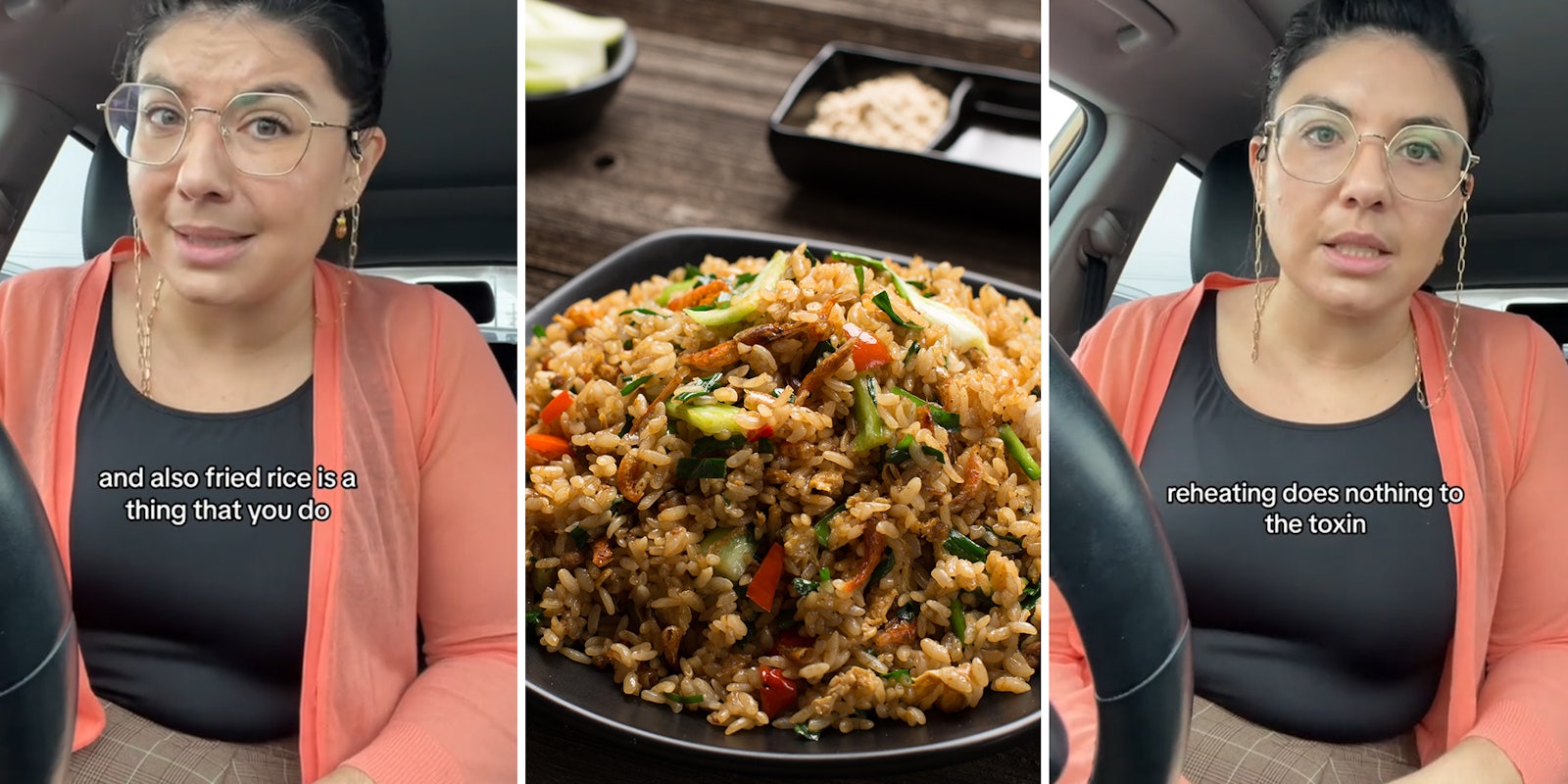A microbiologist has shared a new TikTok explaining how eating reheated rice can make you sick.
In the video, which had over 2 million views as of Saturday, microbiologist and content creator Marie (@mariedoesstuff) addresses “reheated rice syndrome” and the microbiological process that makes eating reheated rice dangerous for consumers.
Marie first explains that the majority of bacteria that cause human diseases grow most optimally at room-to-human body temperature, between 20 degrees Celsius and 30 degrees Celsius (68 to 78 degrees Fahrenheit).
“So that means don’t ever let your food that needs to be cooked sit out at room temperature…for any length of time,” Marie says. “It’s either cooked and you’re eating it hot or it’s been refrigerated and it has stayed cold.”
She shares that an organism called Bacillus cereus is what can cause reheated rice syndrome. Bacillus cereus creates an “endospore,” a seed-like object the bacterial cell dries into when conditions for growth are not prime yet—wrong temperature, no water, etc.
When these spores develop in rice, they can not only resist the heat used to cook it in the first place, but when the rice hits room temperature, the spores have an optimal environment and grow exponentially.
In regards to reheated rice—that is, rice we cook, leave out at room temperature for a bit, refrigerate, and reheat again later—the danger is that leaving the rice at room temperature allows bacteria to grow, and whatever spores grew in the first cooking are not killed by the heat in the recooking.
“Reheating does nothing to the toxin. The toxin is still around and will still make you ill,” Marie warns.
To help combat the risk of reheated rice syndrome, Maria suggests that people wash their rice. She explains that rice carries not only dirt and heavy metals, but Bacillus spores.
“If you wash your rice, you won’t get rid of all the spores but you’ll reduce your chances of it happening,” Marie says.
She also strongly advises to not let any food sit out at room temperature and rejects the myth that hot food cannot be immediately put in the fridge.
“The whole point of this is you’re trying to avoid that middle ground. You either want your food hot or you want your food cold,” she says. “Don’t leave it [in the middle], that’s where things grow.”
@mariedoesstuff Food safety folks! Its not just for restaurants! #biologyfacts #rice #cooking #cookingtips
♬ original sound – mariedoesstuff
In the comments section, some users were skeptical about Marie’s advice and even the existence of reheated rice syndrome.
“In my 38 years of existence, I have not met one person who has died from reheating their rice situation,” one user wrote.
Marie responded to this comment with a video, saying in part, “I’m not actually telling you what to do with your rice. You do you, Boo. I’m just providing information.”
“Man if rice takes me out, I wasn’t meant to be alive,” a second viewer shared.
“Married to a Filipino family and I can tell you we eat day-old rice from the rice cooker that sat out at room temp for a day. Never any issues,” came another response.
One user addressed the skepticism in the comments, writing, “The way that in 2024 people continue to assume that if something hasn’t happened to them, it’s not real,” followed by a facepalm emoji.
Marie is one of many scientists, doctors, and food experts coming forth on TikTok to warn users about reheated rice syndrome and other food illnesses.
The Daily Dot recently reported on sports dietitian Kendall Weir’s viral TikTok which discussed the temperature “danger zone” for foods as well as heat-resistant toxins that live in reheated food and cause illness. Weir’s video responded to an iHeartRadio article entitled, “20-Year-Old Dies of ‘Fried Rice Syndrome’ After Eating 5-Day-Old Pasta.”
A report published by the National Institute of Food and Agriculture (NIFA), a federal agency within the United States Department of Agriculture, provides methods for cooking foods and storing leftovers to best prevent and kill the presence of Bacillus cereus spores.
Some of these methods include chilling cooked food promptly (leaving no cooked food unrefrigerated for more than 2 hours); holding all hot food at a temperature of 140 degrees Fahrenheit or higher; and refrigerating leftovers properly by “cooling rapidly” to 41 degrees Fahrenheit or below, making sure containers are not stacked close together to allow for “adequate airflow” around the food and ensured cooling.
The Daily Dot has reached out to Marie via TikTok message for more information.
Update 9:43am CT, Feb. 2, 2024:
In a statement to the Daily Dot, Marie said that “most people” missed her “sarcasm” at the beginning and how her main point was giving the microbiology context.
“This type of food poisoning is fairly common as food-borne illnesses go, but very rarely fatal,” she said. “Official statistics on food-borne illness are huge underestimates because most food-borne illness doesn’t require medical intervention, it’s just inconvenient and unpleasant.”



